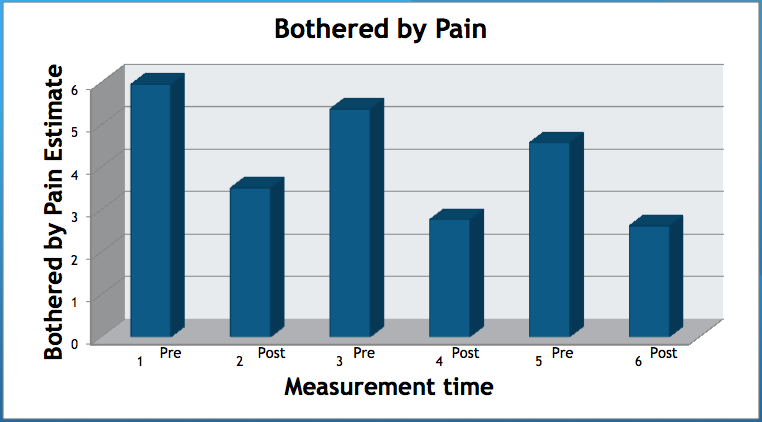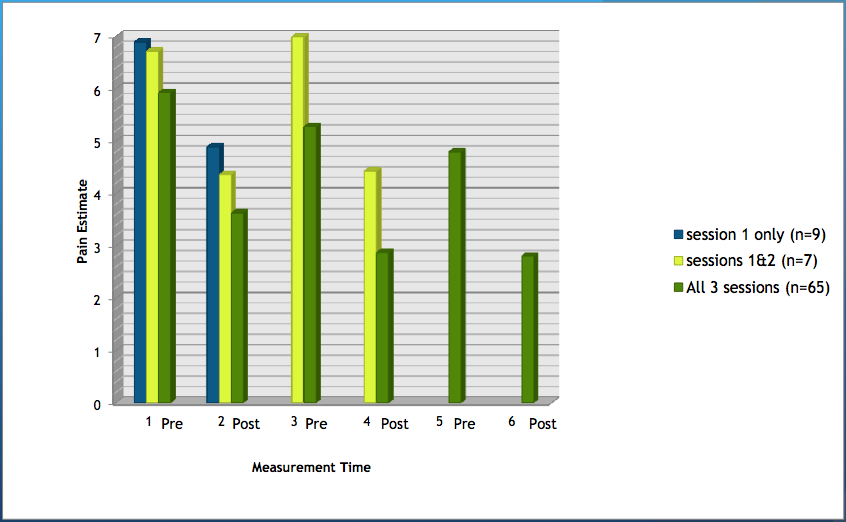Fibromyalgia is a disorder characterized by widespread musculoskeletal pain, described as a constant dull ache, typically arising from muscles. It effects 2% of general population and women are much more likely to develop it than are men by a ratio of 9:1.

Sufferers can be chronically tired, bedridden much of the time and suffer pain that feels like body-wide bruising. It can hurt even to be touched by another person. Restful sleep is difficult. Many people who have fibromyalgia also have tension headaches, temporomandibular joint (TMJ) disorders, irritable bowel syndrome, anxiety and depression.
Fibromyalgia is not well understood at all. It can develop gradually, or have a sudden onset triggered by a traumatic event like a car accident. Its cause is not known. The best current explanation of what happens is that somehow the sufferer’s brain simply becomes more sensitive to pain (“central augmentation of pain sensitivity”), but how or why that happens is more or less anyone’s guess.
[UPDATE! New research suggests fibromyalgia may actually be a problem with blood vessels in the skin.]
There’s no cure, or even real treatment. For symptom relief, sufferers may be prescribed a cocktail of some combination of diazepam, naproxen, ibuprofen gel, tramadol and Fentanyl patches, but like most pain meds, these yield diminishing benefits with habituation, and escalating doses can be dangerous. Anti-depressants are sometimes also prescribed to help the sufferer deal with the overwhelming stress of the disease.
A few years ago, anecdote began to circulate from people with fibromyalgia, that float tanks provided remarkable relief for them. Tina Graham, for instance, was recorded in an interview saying, “After that first float I had complete pain relief for about 17 hours,” and discussing how much her subsequent sessions improved her life.
This caught the attention of float researcher Rod Borrie and his collaborators, who noted the remarkable alignment between the effects and benefits of flotation, and the symptoms of fibromyalgia:
| Characteristics/symptoms of fibromyalgia | Beneficial effects of flotation REST |
|---|---|
| Linked to stress both as a trigger and as a causal factor | Stress reduction |
| Muscle pain | Decreased pain in general |
| Muscle tightness Muscular knots called tender or trigger points Tension headaches, Temporomandibular joint (TMJ) disorder Irritable bowel syndrome |
Decreased muscle tension Decreased pain caused by muscle tension |
| Mood disturbances (depression and anxiety) | Lessening of anxiety Mood elevation |
| Inability to achieve restful sleep Sleep frequently disrupted by pain Other sleep disorders, such as restless legs syndrome and sleep apnea |
Improved sleep |
| Magnesium deficiency | Magnesium absorption (from the MgSO4 solution) |
In 2011 Borrie, Tamara Russell, and colleagues started the Fibromyalgia Flotation Project, with no money, all volunteer, to try to test this treatment on as scientific a basis as possible. Is there an immediate effect from the float sessions, and if so, does it last?
They sought volunteer subjects with fibromyalgia, and float centers willing to contribute free time in their tanks. Each volunteer took three hour-long float sessions over three weeks, and answered a questionnaire before and after each session about ten variables.
| Pain | Stress | Well-being |
| Bothered by pain | Energy | Relaxation |
| Muscular tension | Sadness | Anxiety |
| Freedom of movement |
When they discussed intermediate results at the 2012 Float Conference, they had had 81 participants across five countries (US, UK, SWE, GER, NL).
The results were astonishingly positive: “Without exception, the immediate intervention effects (average pre-post change) are highly significant for all variables in the expected direction (e.g., pain ratings decrease on average by 2.3 points on an 11 point scale from pre- to post-intervention).” There was no control group in the first phase, but in context, fibromyalgia is known as a disease with no good treatment.
I’ll reproduce a typical result chart from Borrie, in this case for discomfort from pain:

Reported levels of “Bothered by pain” before and after three flotation sessions
The six bars shown here are average levels of discomfort reported before and after three flotation sessions. There are two important results here: first, there is a highly significant improvement across each float session (1→2, 3→4, 5→6), with p < 0.01%, and this improvement is of quite large magnitude. Also, and perhaps even more importantly, there is a progressive improvement from session to session with only one session per week (1→3, 3→5), also with p < 0.01% significance. This seems particularly noteworthy in contrast to pain medications, where habituation typically leads to reduced effect.
Similar results were seen for pain, muscle tension, ease of movement, feelings of stress, sadness, well-being, relaxation, and sleep. The effects on energy were not as dramatic, but generally neutral-to-positive.
These results are exciting, but caution is due as this was not a randomized, controlled study. One particular item to be cautious about is drop-outs — if the people who didn’t see benefits were to drop out, that alone could cause an impression of improvement of symptoms in the later sessions. In the first phase of this project, Borrie was able to collect limited data on this issue:

Comparison of pain levels by drop-out status
Here the blue lines show the pain levels reported by participants who only attended one session; yellow, two sessions; and green, all three. We can see that the dropouts reported greater pain at every point, but importantly, with respect to their own baselines, they still experienced improvement. So it appears that whatever their reason for dropping out was, it wasn’t because floating gave them no benefit.
The Fibromyalgia Flotation Project is continuing into a second phase to follow up on these very promising results, still with no funding. They’re trying to push both for greater numbers of participants, to better persuade the medical establishment, and also for a longer test period (ten weeks instead of three) to see how sustainable the results are. It’s all being organized via the internet; sign-up is at fibromyalgiaflotationproject.com.
We at float are pretty enthusiastic about this plan, and look forward to getting involved once we open our doors. If you have fibro, or know someone who does, sign up for our mailing list and we’ll keep you informed.
2 thoughts on “Floating and fibromyalgia”
Comments are closed.